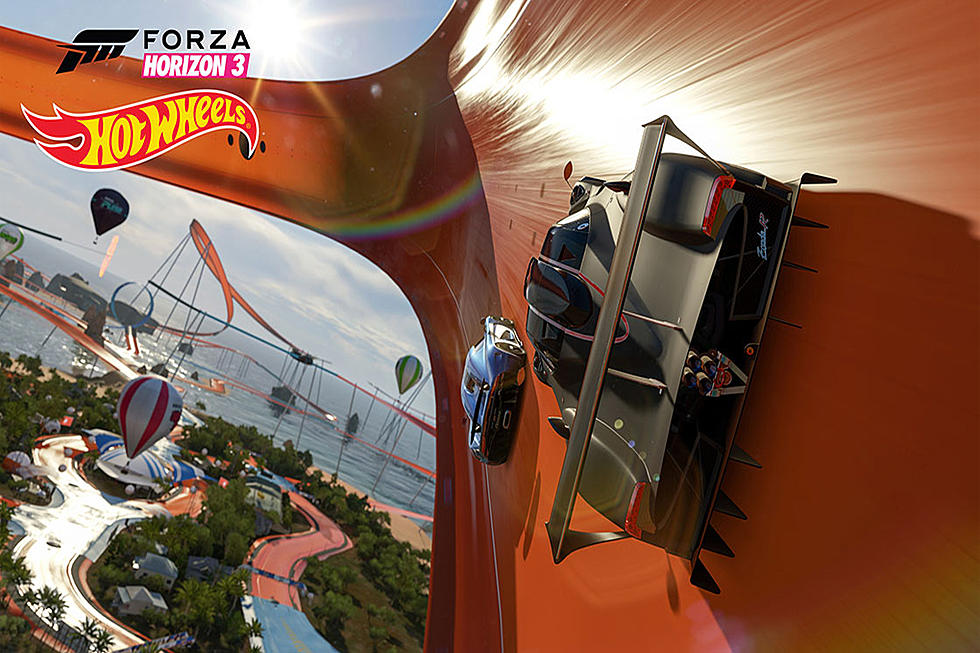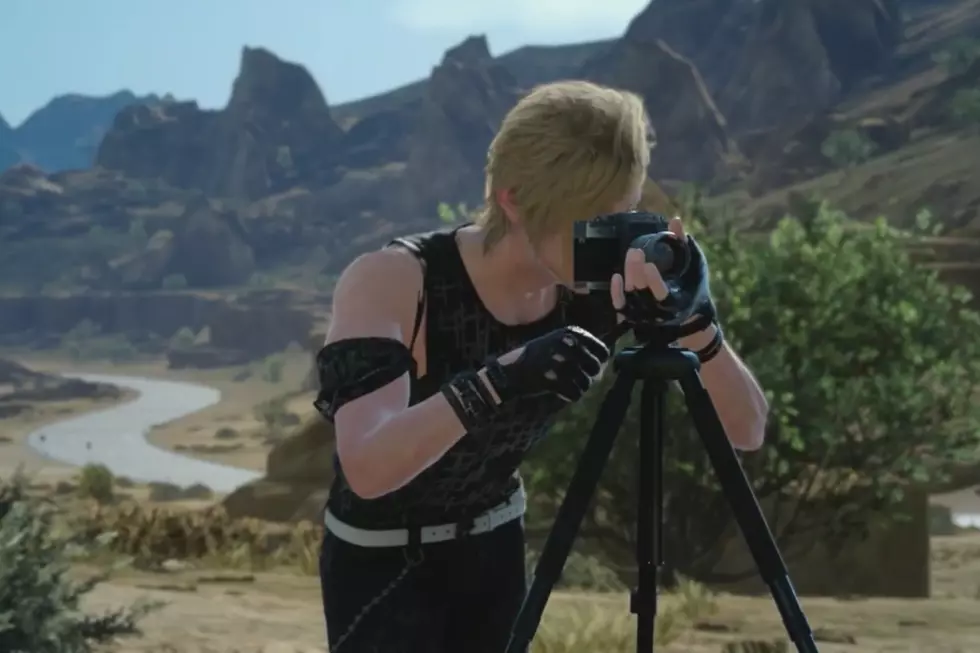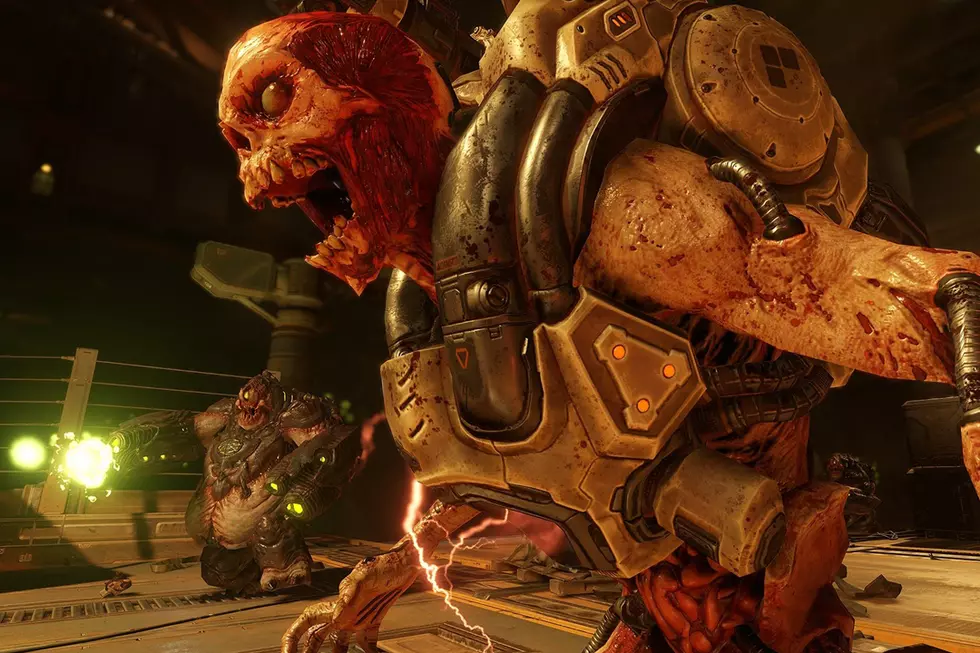
The History of Fighting Games, Part 3 – Attack of the Clones
Attack of the Clones
When we last left off, Street Fighter II had just been released and arcades were being flooded with the quickly growing Fighting Game Community. In the late eighties it looked as if all arcades would die out in the next couple of years, but the new fighting game craze gave them an extra burst of life, albeit a temporary one. It wasn’t just Street Fighter and Capcom that were doing well. SNK, Capcom’s main competitor, was still making impressive money even though Fatal Fury was widely considered to be inferior to Street Fighter II.
Something about the genre really made it take off with arcade gamers at the time. It was an addiction; an addiction to competition. As long as gamers were able to face off against each other, joystick-to-joystick, they would continue pumping in quarters to the nearest fighting game they saw. It was only natural that other companies would see the massive potential for profit in fighting games, and the easiest way to get a fighting game out on the market quickly was to blatantly rip off the Street Fighter II formula.
Power Instinct (not to be confused with Killer Instinct) was one of the first Street Fighter II clones to hit the market. Made by Atlus, there wasn’t really much to separate this game from other fighting games of the time. It was your standard 2D fighter, complete with yellow life-bars and quarter circle super moves. In fact, it’s only notable detail was its roster, which included dog ninjas, killer grannies, magical girls and sumo kids.
Martial Champion was a similarly weird and wonky 2D fighting game made by Konami. Once again, there wasn’t much to set this game apart from other fighting games of the time, except for its anime art style and its bizarre bottom of the screen health bars. It had a roster filled with your standard Street Fighter clones, including the headband guy with fireballs and uppercuts. However, it also had some strange and unique fighters as well, including a Chinese ghost who looked like the great uncle of Soul Calibur's Voldo, a military man who looked like a relative of Solid Snake and a girl who is, no joke, named Titi. We couldn’t make this up if we tried.
Perhaps the biggest rip-off of Street Fighter II, though not the most well-known, was Fighter’s History released in 1993. Fighter’s History was made by Data East, the same guys who brought us the revolutionary Karate Champ only a few years earlier. Once again aiming for the top, Data East created a game featuring 8 fighters from around the world competing in a martial arts tournament. Sound familiar?
Well, to be fair a lot of fighting games were about martial arts tournaments back then, but Fighter’s History was shameless. There was the headbanded guy from Japan, the spiky-haired American dude, the bearded wrestler, the strange maybe Thai/maybe Indian foreign fighter and more blatant Street Fighter character ripoffs. Every character’s move-set was almost identical to a move-set from Street Fighter II, with the main character sporting the classic fireball, dragon punch, hurricane kick combo. Heck, even the normal punches and kicks looked like they were made by tracing over a Street Fighter II character sprite.
Even though fighting games were incredibly fun at the time, gamers weren’t being fooled. The characters of Fighter’s history moved slower than those in Street Fighter, the music was very generic (and also basically ripped off Street Fighter II’s) and stages just weren’t as impressive. This rip-off job was so blatant that Capcom actually tried to sue Data East, although they were unsuccessful. Fighter’s History was largely considered a flop, but that didn’t stop Data East from making a sequel only a year later whose most notable feature was that it also ripped off some SNK characters this time around.
Fun Fact: Fighter’s History Dynamite’s bonus round features a stage where a player has to fight an Ox. This is actually a throwback to a training stage in Karate Champ where the player had to do the same.
SNK Goes Overboard
Fighter’s History came out for the Neo-Geo arcade platform, which at the time, was considered easy to develop for and one of the most flexible. SNK was also a prominent Neo-Geo developer, releasing Fatal Fury to the platform in 1991 to compete with Street Fighter II, and it wasn’t about to give up yet.
In 1992 SNK released Fatal Fury 2, which pushed its Fatal Fury franchise closer to the Street Fighter II formula and further away from the karate game formula of old. The playable roster was opened up to seven characters featuring the original three heroes from the first game, a couple of former CPU characters from the first game and a few newcomers that would go on to become King of Fighters staples such as Kim Kaphwan and Mai Shiranui.
The gameplay of Fatal Fury 2 was a hybrid of the original Fatal Fury and Street Fighter II. The four buttons were now Light Punch, Light Kick, Heavy Punch and Heavy Kick respectively, a control scheme that persists in King of Fighters games to this day. Throwing was moved to a direction plus a heavy attack, much like Street Fighter II, rather than being mapped to its own button. Fatal Fury 2 introduced many new fighting game concepts including the back dash, the counter attack from blocking, stage hazards and of course, the taunt. The game still featured two plane foreground and background fighting, but plane switching was usually ignored in versus matches.
In the same year, SNK released another fighting game entitled The Art of Fighting. Another hybrid of modern Street Fighter II style fighting games with the karate game formula, Art of Fighting introduced Ryo Sakazaki, who was inspired by both Ryu from Street Fighter and Karate Man from Street Smart, and Robert Garcia who would both become King of Fighters staples in later titles. In the single-player campaign, players would only be able to select between these two characters and would have to fight eight CPU-controlled bosses in order to beat the game. However, in versus mode the entire roster was opened up for selection. Two characters from this roster that would go on to be featured in later King of Fighters titles include Takuma, who was also based on Karate Man, and King. Perhaps that is where Takuma got his Mr. Karate alias.
Art of Fighting introduced a lot of new fighting game conventions including super meters and supers, desperation attacks and a zooming camera that would pull out or pull in depending on how far apart from one another the fighters were. It also had really innovative bonus rounds that would teach you how to perform your character’s super moves. Unfortunately, it suffered quite a bit from Street Fighter II rip-off syndrome. Ryo’s moves almost completely mirror Ryu’s, as does his name. Many of the throwaway characters in the game followed Street Fighter II’s mold. Green-wearing American that throws Sonic Booms? Check. Even so, Art of Fighting was largely considered a success, regardless of its Street Fighter II inspiration, and was quite popular among the arcade crowd.
Earlier in 1992, SNK released yet another fighting game to the Neo-Geo platform entitled World Heroes. It was another eight-fighter Street Fighter II clone, except this the roster was filled with heroes from all throughout time. You actually got to play as a goofy, homoerotic version of Rasputin. Take that Bill and Ted.
Unfortunately, World Heroes had a lot of flaws. It utilized the old Fatal Fury control scheme of Punch, Kick, Throw which was considered primitive when compared to Street Fighter II’s six-button control scheme. The characters weren’t very likeable and the gameplay was slow and stiff. The music was also uninspired and repetitive and the translation, especially in character win quotes, was one of the worst in gaming history.
World Heroes was, at best, a mediocre title and, at worse, a mostly ignored cabinet in the corner of a dingy arcade. Nevertheless, it was important because it marked the beginning of fighting game oversaturation. At this point SNK wasn’t just competing with Capcom, it was also competing with its own games for quarters and attention, and the number of titles was only going to increase in the coming years.
In 1993 SNK continued to overload the market with fighting games by putting out yet another Fatal Fury game, this time entitled Fatal Fury Special. It featured interesting stages that would actually change appearance between rounds, which was an incredible innovation at the time. It also opened up the Fatal Fury roster, allowing players to control characters that were previously only controlled by the CPU. The entire roster of Fatal Fury and Fatal Fury 2 returned and, more importantly, Ryo Sakazaki from Art of Fighting made a special guest appearance. This started the tradition of video game crossovers which SNK would continue in its King of Fighters series and which would eventually spread like wildfire across the fighting game world in the late '90s and early '00s.
World Heroes also got a sequel in 1993 in World Heroes 2, which was overall a better game. New characters were introduced, as were new moves and stages. The graphics were also refined and character movement was much smoother. World Heroes 2 also introduced a new “tug of war” life-bar option that replaced the classic double life-bars with a single life-bar that moved back and forth as character’s were damaged. It never really caught on at the time, but would later serve as inspiration for games like Battle Stadium D.O.N. for the Gamecube.
SNK released one more game in 1993, Samurai Shodown. Unlike most other fighting games at the time, Samurai Shodown did away with the classic pattern of punching and kicking. Instead, characters each used their own unique weapon styles featuring swords, knives, claws, and more. This would later serve as inspiration for 3D fighting games such as Soul Calibur. Samurai Shodown introduced a new rage meter, which built as players took damage. When it was full, players would get a huge damage boost and could execute powerful super moves. The rage meter, along with Art of Fighting’s desperation attacks, was some of the first examples of “comeback mechanics” in fighting games.
At this point, SNK had six games on the market (four if you don’t count the sequels) and Capcom only had one. You would regularly see multiple SNK games in one arcade, which gave the company quite the financial boost. Neo-Geo consoles were also able to load multiple games into one cabinet, which made many arcade load all of SNK’s titles into one machine. This alienated gamers who preferred one SNK title over another, but couldn’t play that title because the machine was currently running World Heroes, or some non-fighting game like Metal Slug. Meanwhile, Street Fighter II had a cabinet all to itself and continued raking in profits throughout the day. Soon, arcades would start ordering multiple Street Fighter II cabinets just to keep up with demand, while SNK games still had to war for time on Neo-Geo cabinets. This, along with the fact that most of these games were looked at as Street Fighter II clones, forever kept SNK in Capcom’s Shadow.
Patching Before It Was Cool
While SNK decided to flood the arcade scene with new fighting game titles, Capcom had a different strategy in mind. Instead of giving its fans different titles to play, Capcom would keep improving on the Street Fighter II system. This meant new characters, new stages, tweaks to character balance and more. Unfortunately, DLC and patching were uncommon in the early '90s. So the only way to get a new version of Street Fighter II out to the masses was to re-release it as a new game. This meant arcades needed to keep buying new Street Fighter II cabinets, which meant more profits for Capcom without actually costing the common gamer any more money.
In mid-1992, Capcom released Street Fighter II Championship Edition. It was mostly identical to the original release of Street Fighter II with only a few important differences. First of all, players could choose the same character in versus matches, allowing mirror matches to take place with the whole roster. Second of all, the four boss characters Balrog, Vega, Sagat and M. Bison were now selectable.
Later in 1992, Capcom released yet another Street Fighter II update (and you thought Ultimate Marvel vs. Capcom 3 coming out eight months after the original was bad). Named Street Fighter II: Turbo (or Street Fighter II Hyper Fighting), this re-release increased the speed of the game overall. The increased speed changed the way fighting games were played by putting a large focus on mix-up/cross-up oriented gameplay. It also added several new color palettes for each character, new character selection artwork and recolored stages. These cabinets also included one of the most prominent character balance tweaks, which not only made the game slightly more fair, but also started to draw differences between Ryu and Ken.
The release of Street Fighter II: Turbo was actually a response to the growing arcade hacking community. At the time, modifications of Street Fighter II were being illegally sold to arcades everywhere, a popular one being Street Fighter 2: Rainbow Edition. These modifications allowed characters to perform special moves in the air, block in the air and even transform into each other. Most of these illegal hacks also ran at a faster frame rate, hence the inspiration for Street Fighter II: Turbo. They would later also be used as inspiration for new mechanics, such as aerial specials, in later Capcom fighting games.
In 1993, Capcom released yet another version of Street Fighter II, entitled Super Street Fighter II: The New Challengers. This was the closest thing fans had seen to a brand new Street Fighter II since the original released in 1991. It featured completely redone music, art and even voice acting. The balance of the game was completely reworked as well, and Ryu and Ken were officially separate characters (though they could still be considered “clone” variations of each other). Super Street Fighter II also introduced four new characters, Cammy, Fei-Long, Dee Jay and T. Hawk, increasing the roster to 16 which was one of the biggest at the time.
The most impressive addition to Super Street Fighter II was the combo system. While combos were kind of a glitch in previous Street Fighter titles, Super Street Fighter II embraced them. You would now see a combo counter in the corner as you continued to beat on your opponent, and soon a brand new combo community grew out of the competitive fighting game community. Instead of fighting against an opponent, you were now fighting against the gameplay system, trying to squeeze out the most damage and the most hits out any one combo. This combo madness would eventually go on to inspire games such as Killer Instinct, and the combo counter would stick around in pretty much every 2D fighting game that has come out since.
The final version of Street Fighter II to release to arcades was Super Street Fighter II Turbo in 1994. Considered the definitive version of Street Fighter II and still played in pro gaming tournaments to this day, Super SFII Turbo combined the fast speed of hyper-fighting with the balance changes and new characters of Super Street Fighter II. Players could also choose between “new” or “old” versions of their characters. New versions had all the balance tweaks handed down through the many Street Fighter releases and could use new “super moves," powerful moves that utilized double inputs that can only be done when a super meter was maxed out. Old versions did not have access to super moves, but also remained unchanged from their original Street Fighter II incarnations which made some of them incredibly broken, like Old Sagat.
The most well-known addition to Super Turbo was Akuma, which would soon become one of the most iconic Street Fighter characters of all time. This incredibly broken boss character could only be faced by the best of the best. You had to get three perfects and never lose in order to get to him. He would replace M. Bison at the beginning of the final stage by attacking him with what would become his signature “raging demon” attack. Akuma played like Ryu and Ken on steroids, teleporting around the stage, throwing air fireballs, throwing multi-hit fireballs that chipped through your block and more. He was like the living incarnation of all the illegal Street Fighter hacks.
Super Turbo would continue to be played in arcades for several years, even after Capcom had released new Street Fighter games. It competed solidly with SNK games for the title of most loved arcade fighting game. But Capcom and SNK were both Japanese companies? Didn’t any American companies want to get in on the fighting game scene?
Fatality
Enter Midway and American game designers Ed Boon and John Tobias. Inspired by the success of Street Fighter II, as well as old ultra-violent kung-fu flicks, the two set out to make their own unique brand of fighting game, Mortal Kombat, which released in 1992. In many ways Mortal Kombat could be looked at as a step back from Street Fighter. Every character had the same set of normals and it was only a few simple special moves that set them apart. The game used a block button rather than the commonly accepted “hold back to block” control scheme, which reduced focus on mix-ups and strategy and made the game more button-mash-y than other titles on the market. However, there were two things that set Mortal Kombat apart from the rest of the crowd--its graphics and its blood and gore.
Taking a page from the unfortunate failure that was Pit Fighter, Mortal Kombat decided to use digitized graphics instead of animated sprites for its characters. This time it really worked, mostly because of the violence. Blood would spray everywhere when your character was hit, falling onto the arena around you. You could uppercut characters several stories into the air, hearing their bones crunch on the pavement when they fell back down. Then, of course, there were the fatalities, Mortal Kombat's incredibly complex finishing moves that had no purpose other than to humiliate your opponent. Actually seeing a photorealistic man rip off another man’s head with his spine still dangling from his neck stump was something totally new for fighting gamers at the time. Arcade crowds ate it up, but concerned parents weren’t as thrilled.
Fun Fact: Fox News was up to its old tricks back in the '90s too!
Mortal Kombat managed to stay under the radar enough until its sequel, Mortal Kombat II, came out in 1993. Mortal Kombat fans consider this title one of the best in the franchise’s history, with a powerful roster of 12 characters, interesting bosses, tons of easter eggs and the new joke finishers of Babalities and Friendships. It also boasted vastly improved graphics, which meant even more realistic blood and gore.
When Mortal Kombat II burst onto the scene, people were in an uproar. It was largely considered too graphically violent for any child to play. At the time, video games were largely considered toys and the thought of a “mature” video game rarely crossed anyone’s mind. Mortal Kombat, along with other violent games like Doom and Night Trap, spurred the creation of the Entertainment Software Rating Board or ESRB, the same rating system that we use today. So yes, fighting games helped to shape the gaming industry as we know if, if only through the excessive use of ultra-violence.
Fun fact: In 2010 Ed Boon revealed that he actually sympathized with concerned parents of the time saying in an interview with Xbox World 360 Magazine, “I always thought that they had a point you know… There was no ratings system when the first one came out, and to me it makes sense - I wouldn’t want my ten-year-old kid playing a game like that… Our intention was not to make this game thinking 'oh, a ten-year-old's going to love this, ripping people's head off!’ The reality of games is that the average player is about 28, 29, the same guys who watch Goodfellas, Scarface, all these movies that have that kind of content, and that's what they were looking for in certain games.”
So that’s where the market was from 1992-1994. SNK, Capcom, and Midway were warring for the crown of 2D fighter king as hordes of clones tried to grab at their feet. But the game was about to change very soon as Sega was going to make a fighter that took on a whole new dimension: the third dimension.
More From Arcade Sushi









